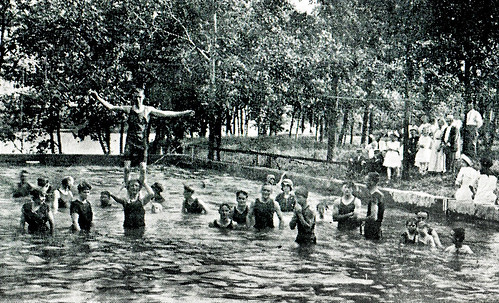
African Americans were generally not welcomed at swimming pools like this one at the Joplin Country Club.
In 1910, the total black population of Joplin was approximately 800 individuals out of a total population of approximately 32,000. Thus, the African American community represented only about 2.5% of the city’s population. Despite being such an insignificant portion of the population, the de facto laws of segregation were in strong effect in 1913. The effect of the segregation struck one prominent Joplin businessman when he took his son to the local playground. He recounted, “The other night I went to the playground with my son. It made my heart ache to see the wistful faces of the negro children outside the fence, and know that they could not enter.”
It was not merely the denial of the playground to the black children that upset the businessman, but also that, “Unlike white children the negro kiddies cannot have the swimming privilege of the amusement parks of the district.” Additionally, the businessman noted, “they are not allowed to attend many moving picture theaters, and are confined to a balcony in those places they are allowed to enter. The streets and alleys are the only places they are welcome. When they grow up they are unwelcome almost everyplace they visit. It is not right.”
As a result of the segregation, the businessman pledged $250 to the establishment of a playground where black children, as well the general poor, could visit and play. It would not be the first donation by a businessman to benefit the black community of Joplin, previously Thomas Connor had paid for the construction of four African American churches some years earlier. Such sentiments were a start toward a better approach to a society of different races, but unfortunately along the reasoning of “separate but equal,” not equality for all. The solution in 1913 Joplin was not to open the playground to children of all races, but to simply build another playground.
Source: Joplin News-Herald, 1910 United States Census

